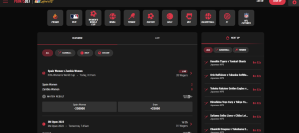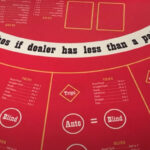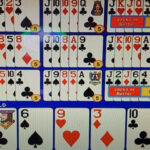Sports betting is unquestionably one of the most popular forms of gambling on the planet. It may have taken a while for it to become legal in the United States – the supreme court only struck down legislation against sports betting in 2018 – but it’s one of the oldest forms of gambling around. From the Colosseum of Rome to the Premier League of the United Kingdom, people have been placing wagers on sports events as long as sporting events have been a thing.
The reason it’s so popular is obvious. Unlike most gambling, where winning or losing is purely a matter of chance (only games like poker are the real exception to this), sports betting is based as much on strategy and knowledge of the game and the players as it is on the dumb luck of the day. Yes, Manchester City might suddenly have an off day and fall on its face with gold just within reach, but if you follow the Premier League, if you follow football, if you follow Man City, you should be in the position to place bets that maximize your chances of winning. Try to do that with roulette or a slot machine!
Now, sports betting can be fairly complicated in and of itself. You need to know about things like spread bets, where the bookies even out the odds of the two competing teams or players, and you have to decide whether you want to place a safer bet on simply one team or player winning over the other or if you want to go for the more lucrative side of things by betting on exactly how much one team/ player will beat or lose to the other.
A Push in Soccer
A push, very simply, is betting jargon for what happens when the match or game you’re betting on ends in a tie. Such occurrences are obviously super common in soccer – or football, as it is known outside of the good ol’ US of A. Soccer is, after all, infamous for the fact that teams can play a full game and end up with 0 goals on both sides and that winning a game by, say, 3 to 1 is considered a total landslide.
Which is why when a push happens in soccer, it’s baked into every bet. In other words, when it comes to soccer, what punters normally bet on is a three-way moneyline, which is to say that in a match between Man City and Liverpool, for example, bets would routinely be made on Man City winning, Liverpool winning, and on the game ending on a tie. In soccer, ties are about as common as one team winning and certainly a lot more likely than, say, one team winning by five goals.
As such, when it comes to soccer, there’s really not much in the way of complications when a push happens. It doesn’t particularly matter if the bet is a simple moneyline where the bet is simply over which team wins, loses or ties or in more complicated spread bets where the bet is on how much the winning team wins by or how much the losing team wins by. A tie is one of three options that all soccer bets make use of.
A Push in Other Team Sports
Because tied scores are much less common in other team sports than they are in soccer, pushes normally happen on spread or total bets.
Here’s a basic example of what a push would look like on a spread bet on an NFL game.
- Let’s say that the Los Angeles Rams are -3 favorites (more likely to win) over the Kansas City Chiefs.
- This means that the Rams will need to win by more than three points to “cover the spread”. This could be 30-26 or 35-10. As long as the total winning points are more than 3.
- The Chiefs, as the underdogs, “cover the spread” by either winning or by losing by fewer than three points. So, betting on the Chiefs will pay out if they lose 30-28, but not 30-20 – or with any score where they win.
- If the Rams end up winning by exactly three points, however, (30-27 in our examples) then the spread is a push.
A push will always lead to both bettors who staked their money on the Rams winning and those who did the same on the Chiefs will end up getting their initial wagers back.
Where You Find Them and How to Avoid Them
While spread bets on team sports most often result in pushed bets, they can happen on any sport and, really, on any kind of bet. All you really need to keep in mind is that whether you’re making a parlay bet (betting on multiple items at once) on a football match or making a spread bet on a game of tennis, as long as there is no clear winner, the result is a push.
A push, obviously, is a much better outcome to a loss, but it does make the whole bet seem pointless. Is there a way to avoid them, though, or are they just the inevitable result of betting on a game between two teams or players?
They’re actually very, very easy to avoid as long as you’re dealing with a sports book that offers what is known as half-point betting. Now, obviously, most sports don’t actually involve fractions in their scoring, but here’s a simple example of how it works, using the same teams and spread as above, but with an added 0.5 to the spread:
- The Rams are the favorites over the Chiefs, with a spread of -3.
- You place a bet on the Chiefs, but add that half point so the spread then becomes -3.5.
- In this case, there is no way that a tie could happen. The Rams will only cover the spread if they score more than 3. If they score 3 and less (because 3 is obviously less than 3.5) they lose.
- On the flipside, betting on the Chiefs will result in a win if they win outright or if they lose by 3 or fewer points (again, 3 being less than 3.5)
Simply, with half-point betting, bets can never be a push because there are no half points in the actual game. Which is why, unless you are betting on something where half-points are awarded, using half-bets will ensure that you never have to worry about a push ever again.

































